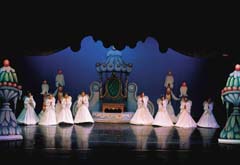Housewares & Miscellaneous Items
8. Model and pattern making
|
The uniformity of MDF throughout its thickness, freedom from knots or other growth defects and the absence of any grain or other inhomogenities make it an ideal material for model and pattern makers. The availability of MDF in a wide range of sizes and thicknesses allows individual components to be cut with minimum effort and reduced wastage. |
 |
Similar processes using MDF can be adopted for model railway or racing track layouts, farmyards or townscapes.
Individual buildings of historic or architectural interest can be modelled using MDF panelling embellished with hand or machine carved columns, pediments, mullions or other architectural features. The machined surfaces and edges can easily be decorated to reproduce the essential features of brick, stone, concrete, slate or other building materials.
MDF can be used for the main structural elements and surface features of model ships, aircraft and cars. Thin MDF is particularly useful for modelling classic chairs and other furniture items. At a lower level of authenticity, MDF is often used for interior fitments and furniture for dolls houses and shops.
The high stability of MDF and the ease with which it can be carved into complicated shapes makes it a valuable raw material for pattern makers working in the plastics or metal casting industries.












